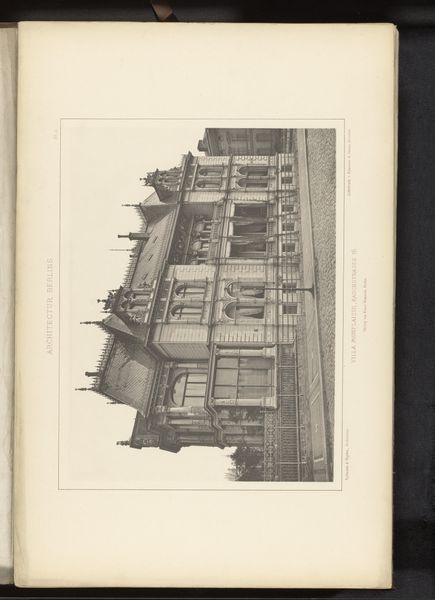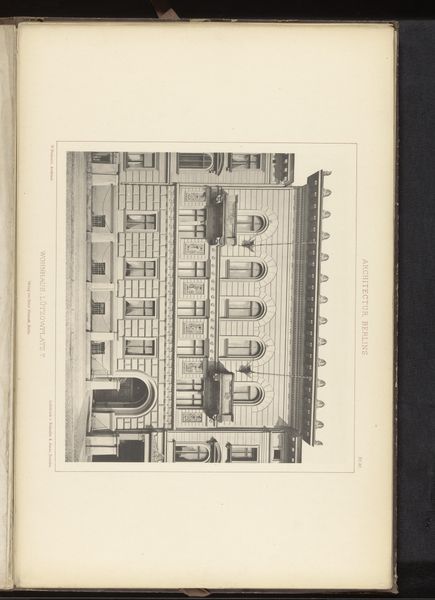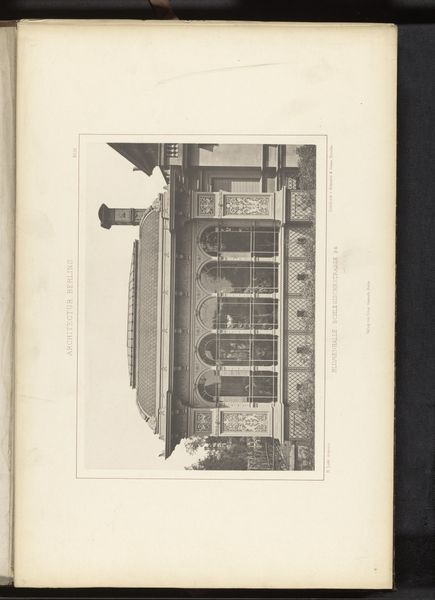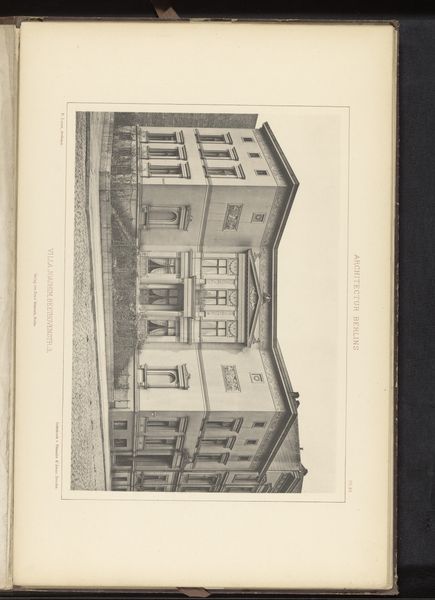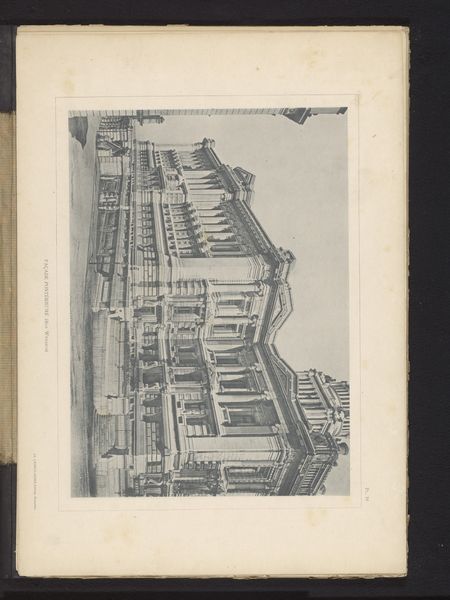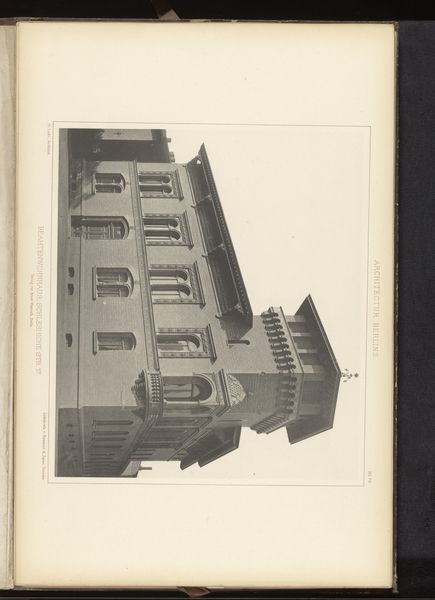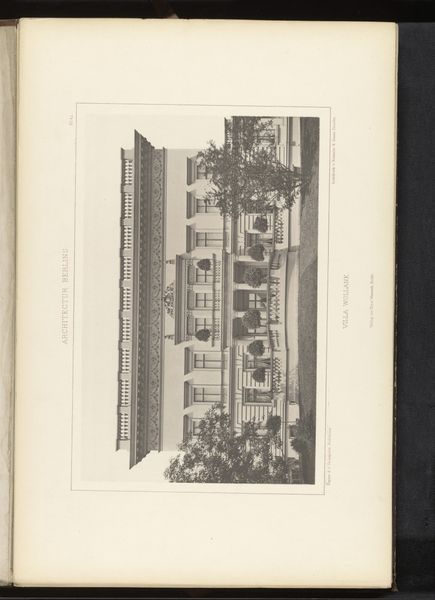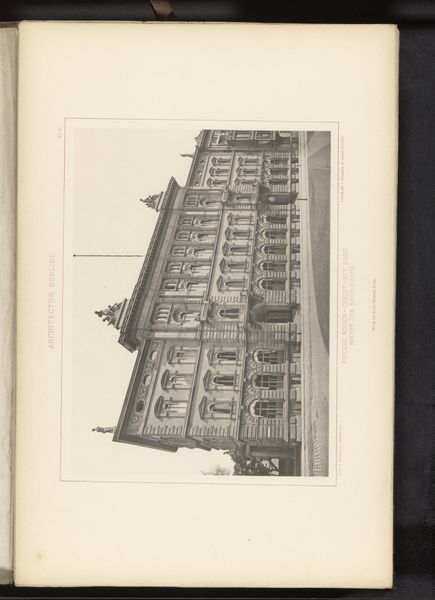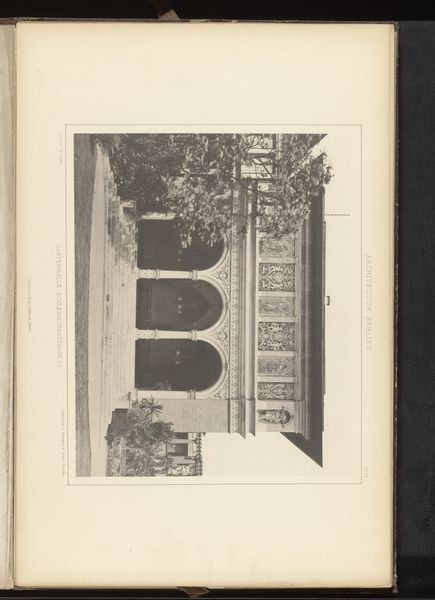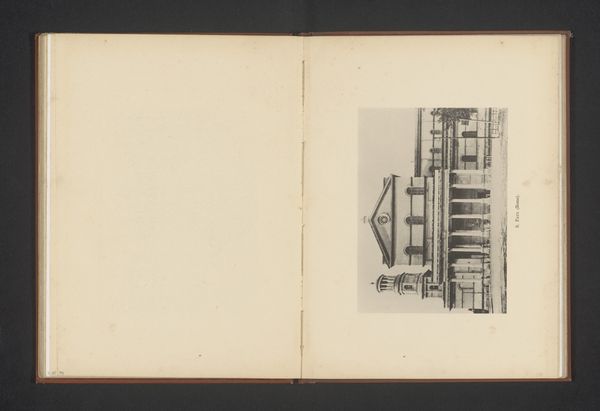
Gezicht op Villa Liebermann aan de Thiergartenstrasse 16 in Berlijn, Duitsland before 1877
0:00
0:00
anonymous
Rijksmuseum
print, engraving, architecture
# print
#
cityscape
#
engraving
#
architecture
#
realism
Dimensions: height 227 mm, width 328 mm
Copyright: Rijks Museum: Open Domain
Editor: Here we have a print from before 1877, showing a view of Villa Liebermann in Berlin. It’s an engraving and the architectural detail is just remarkable! It seems to convey a sense of the establishment or class. What do you make of it? Curator: It’s tempting to see it simply as an architectural record. However, understanding the context is critical. This villa, owned by the Jewish banker Liebermann, stood in the Tiergarten district. Consider how this image, reproduced and circulated, might function. Editor: Function? Curator: Yes, consider Berlin at this time. The rise of nationalism, anti-Semitism... How might a representation of Jewish wealth and status be read by different viewers? Is this a neutral portrayal or does it participate in larger cultural anxieties? Editor: So, the very act of documenting and displaying this villa could be interpreted as a statement about wealth, power, and social tension. It could signify acceptance or alternatively reinforce stereotypes depending on the viewer. Curator: Precisely. Think about visual culture and its ability to reinforce or subvert prevailing power structures. Where does Liebermann’s status as a Jewish man place him in late 19th-century German society? It asks crucial questions about belonging and representation. Editor: I hadn’t thought of it that way. It’s more than just a pretty picture of a villa, it's a reflection of society! Curator: Indeed. And that’s the power of situating art within its complex historical and social framework. It compels us to ask, whose stories are being told, and who is left out? Editor: Thanks for shedding some light on that! It enriches the experience so much more. I'm definitely leaving with more to think about now.
Comments
No comments
Be the first to comment and join the conversation on the ultimate creative platform.
